SPINAL DECOMPRESSION THERAPY & HERNIATED OR DEGENERATIVE DISCS
CHEW ON THIS FOR A MOMENT
Some of it is a bit technical, but follow along to the amazing end.
- “Herniation of the Nucleus Pulposus [the disc's jelly center] or protrusion of the disc is now firmly established as a pathological mechanism associated with low-back pain and sciatica.”
- “The majority will agree that the treatment of many of these cases by laminectomy and nerve-root decompression [SPINAL SURGERIES] has been disappointing.”
- “Destroy the disc and you destroy spinal mechanics. Therefore, in disc derangement, we are dealing with a dual problem:” (Deranged spinal mechanics AND the effects of spinal nerve-root irritation and compression.)
- Both aspects of “deranged spinal mechanics,” above cause nerve root irritation, AND nerve root compression that can cause pain.
- Patients with "deranged spinal mechanics” should not be surgically managed. [“Deranged spinal mechanics” appears to be synonymous with the chiropractor's decades-old definition of "SUBLUXATION". Vertebrates that are either out of place or not moving properly in relationship to each other.]
- The normal Nucleus Pulposus is a semifluid substance, being 80% water and, thus, is “incompressible.” [When it is compressed too much, something has to give. Because fluid cannot be compressed (think of hydraulics here), the ligaments that make up the Anulus Fibrosis begin to tear]
- The normal semifluid nucleus transmits forces to the elastic spinal ligamentous structures [The Anulus Fibrosis]. “The critical feature in the disturbance of spinal mechanics and in the production of pain is the effect on the ligamentous structures, caused by the loss of water or nuclear substance following injury or degeneration.”
- “An individual getting up in the morning is taller than when he [she] goes to bed at night:” men by ¾ inch, women by ½ inch. This is because the nucleus loses fluid in an upright gravity environment. This exchange of fluid helps the nucleus and annulus of the disc to remain healthy.
- With age, the cartilaginous end-plate becomes less permeable to fluid, the free exchange of water is suppressed, resulting in “progressive desiccation [herniation] of the nucleus.”
- Small tears in the annulus allow the nucleus to escape, reducing fluid pressure and altering spinal mechanics, and pain.
- The resiliency of the spine and the motions permitted to it are primarily due to the elastic nature of the annulus fibrosis.
- “The loss of the fluid pressure in the Nucleus Pulposus leads to grave derangements in the physiology of the disc.”
- “The decrease in the vertical height of the intervertebral disc spaces leads to subluxation of the interarticular zygapophysial joints [FACET JOINTS], in which degenerative changes develop as the result of the abnormal forces acting upon them.” [Interestingly enough, this has been the message of chiropractors for over 100 years. Abnormal Joint Motion causes degeneration, and degeneration causes loss of normal joint motion. Repeat Ad Infinitum].
- “The ligamentous structures of the body are the most sensitive to pain.” [The outer portion of the disc (Anulus Fibrosis) is made up of ligaments]
- Ligaments can initiate pain from chemical irritants or from “mechanical displacement of the collagenous fibers.” This pain is deep, dull aching and poorly localized. [Again, a definition of Chiropractic Subluxation. By the way, COLD LASER THERAPY actually speeds up the body's rate of collagen production]
- Ligament pain ebbs and wanes, and can be accompanied by “vasovagal responses, such as nausea, sweating, and fall in blood pressure.”
- Disc pain can occur in the absence of direct irritation of the peripheral nerve or nerve root.
- “The Annulus Fibrosus has been shown to possess a rich nerve supply,” allowing it to initiate pain.
- Distortion of the annulus and other spinal ligaments can cause not only local pain, but also sclerotomal pain that radiates down the posterior thigh. This is not true SCIATICA, because there is no irritation to the nerve roots. [It is important to understand this point. It means that one can have "Disc Pain" without any tests such as an MRI being positive.]
- When the lumbar nerve roots exit the intervertebral foramen, they carry with it the spinal dura, doubling their diameter as compared to the cauda equina roots in the subarachnoid space.
- Nerve compression primarily affects large nerve fibers, which are associated with proprioceptive and motor function.
- Pain fibers are smaller, and are more likely to fire in response to chemical (inflammatory) stimulus than to mechanical pressure.
- DISC HERNIATION without nerve compression is characterized first by pain and then a deep ache radiating into the leg in a sclerotomal pattern.
- DISC HERNIATION with nerve compression is characterized by loss of vibratory sense, muscle weakness, reduced tendon reflexes, and hyperesthesia [increased pain] / pain in a dermatomal pattern. The pain is sharper from chemical inflammation in the region.
All of these points indicate that patients can be placed into two distinct categories:
A) Mechanical Spinal Derangement: [For over a century, Chiropractors have referred to this as "SUBLUXATION"] Although there is nerve irritation, there is no actual nerve compression. These patients have “backache and local signs and symptoms of injury to the vertebral ligamentous structures, have radiating pain, deeper in character, extending down one or both extremities. The extent of the radiation is indicative in some measure of the degree of irritation or injury to the ligamentous structures.”
B) Nerve Root Compression From Disc Herniation: The “pressure will interrupt nerve conductivity in a precise sequential fashion:” The larger nerve fibers conveying proprioception and motor impulses are affected first. The nerve fibers conveying pressure, touch and fast pain are affected second. The nerve fibers conveying temperature sense and deep pain are lost last. These patients usually also have spinal ligamentous irritation that causes local backache and the “radiation of deep pain to the extremities.” Surgery to decompress the nerve root will often leave the patient with the ligamentous back pain and deep extremity referred pain radiation, and the patient will often be disappointed.
- “Weakness should be considered a definite emergency and the patient should be operated upon at once. If the motor weakness is left untreated for a considerable time [6-12 months], the strength never returns.”
- 40% of disc herniation patients with nerve compression have only motor signs, they “possessed no deficit in the common sensory modalities of pain, light touch, heat and cold, or sense of position.”
Thanks to the venerable Dr. Dan Murphy for this incredible information.

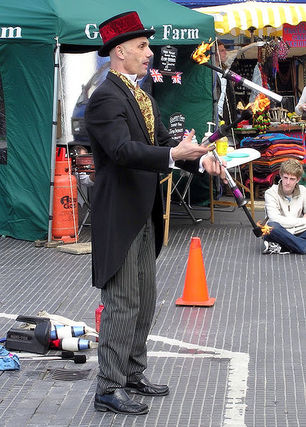

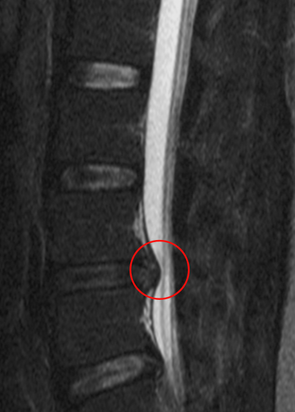


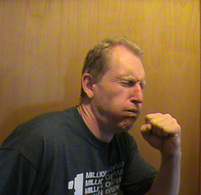
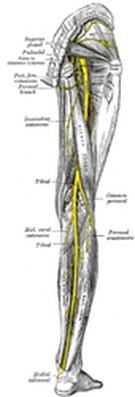
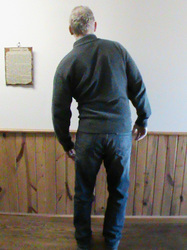



 RSS Feed
RSS Feed